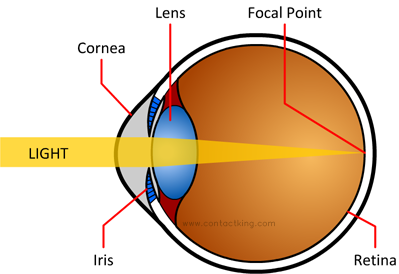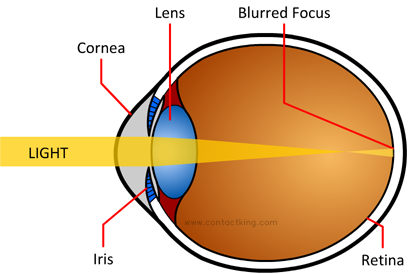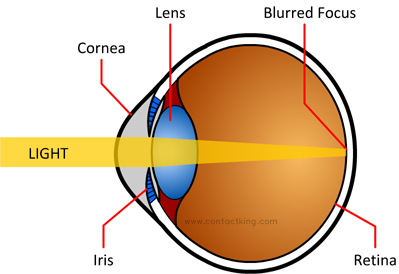
Contact Lenses
Contact Lens Background
Contact lenses can be used to correct vision - usually referred to as corrective lenses, or for cosmetic purposes e.g. changing your eye colour. Over 125 million people use contact lenses throughout the world in a market worth more than £3.8 billion UK pounds ($6.1 billion US dollars). Interestingly, twice as many women wear contact lenses than men.
The Benefits of Contact Lenses
For some people the overwhelming reason for wearing contact lenses is because they dislike wearing glasses. There are other reasons though, such as better peripheral vision than glasses and they won't need cleaning as much in dusty or wet conditions. They are ideal for physical activities like sports too as they are a lot less likely to fall, get knocked off or break. When driving at night, glasses can sometimes cause headlights to glare - a problem which you do not get with contacts. You also do not need the expense of purchasing prescription sunglasses as normal ones will work fine. There are also some visual problems which are better corrected using contact lenses than glasses.

Thank you for visiting Contactking.com
I hope this site proves to be helpful in offering visitors some links and information regarding contact lenses.
Corrective Contact Lenses
This type of lens is designed to correct vision problems, most commonly a refractive error. Normally, when light from distant objects enters the eye it is focused onto the retina in parallel lines. Someone with a refractive error cannot focus this parallel light on the retina correctly and so objects may appear blurred.
There are several medical conditions for different types of refractive error:
- Myopia is a spherical error where the eyeball is too long or has too much curvature causing a person to be shortsighted.
- Hyperopia is also a spherical error where the eyeball is too short or isn't curved enough causing a person to be longsighted.
- Astigmatism is a cylindrical error where the cornea is not perfectly spherical and can cause contours in one direction to appear blurred.
- Presbyopia is another cylindrical error where the lens is not as flexible as it should be (often due to age).

Perfect Vision Diagram
This is a much simplified diagram of the human eye. The light enters through the pupil and is focused by the lens onto the back of the eyeball (the retina). The focus is sharp.

Myopia - Short Sighted Diagram
This is a much simplified diagram of a human eye which is short sighted. The light enters through the pupil and is focused by the lens but the focal point falls short of the back of the eyeball (the retina). The image appears blurred.

Hyperopia - Long Sighted Diagram
This is a much simplified diagram of a human eye which is long sighted. The light enters through the pupil and is focused by the lens but the focal point is past the back of the eyeball (the retina). The image appears blurred.
It is estimated that refractive errors may affect up to 2.3 billion people.
Cosmetic Contact Lenses - Coloured Contacts and Novelty/Fashion Lens
These types of lenses are mostly designed to change the appearance of the eyes, although you can get cosmetic lenses which are also corrective. Even though they may only be used to change the visual appearance of the eyes they are still classed as medical devices due to the risks they can pose, for example infection.
These can give the appearance of a different iris colour (e.g. from blue to brown) or a different pupil shape (e.g. cats eyes or snake eyes). They are even available in ulta-violet (UV) colours and various patterns making them popular for tv and film special effects, halloween parties or clubbing.
Types of Lens
Rigid Lenses - These are stiff, perspex like lenses and have been available for over a hundred years. They keep the shape and are usually more hard wearing than soft lenses and last longer, but can take a while to become comfortable. They don't flex when blinking which can help stop the eye refocusing constantly. Rigid lenses are made by a computer controlled lathe which grinds and polishes the surfaces to the correct shape.
Soft Lenses - Available since the 1960's and 1970's, these lenses are immediately more comfortable than rigid ones due to their flexibility. They usually allow more oxygen through to the cornea than rigid lenses too. The most common way these are made is by injecting liquid polymer into a two-part mold which is squashed together forming the desired shape. Short term contact lenses such as daily disposabled and monthlies are soft lenses.
Hybrid Lenses - There are a small number of hybrid lenses available which have the benefits of both types of lens. They consist of a rigid centre giving its benefits but with a soft outer edge for more comfort.
Bifocal, Trifocal and Progressive Lenses - For people suffering from presbyopia (a stiffening of the lens usually brought on by age) you can even get multifocal lenses just like you can with glasses, in both a rigid and soft lens format. Some of these have a small segment which allows the wearer to focus on close things (e.g. for reading) and the rest allows focusing of distant objects. Another method is to use concentric rings which allows near and far focus adjustment quickly. Alternatively, some people choose to wear a distance focus contact lens on one eye and a near focus contact lens on the other - also known as monovision, although this method can affect depth perception.

To the left is a simplified example of a multifocal contact lens. The area at the bottom is for close focus, for example reading. The area at the top is for long distance focus, for example driving. The area inbetween allows for focusing between the two.
Orthokeratology Lenses - These lenses are designed to correct low levels of myopia (short sightedness) or mild astigmatism while the wearer sleeps. They are also known as ortho-K or corneal re-shaping lenses. Although the effects of wearing the lenses are not permanent, the effects of wearing them over night to change the shape of the cornea can last for a few days.
Know Your Prescription
When you have an eye test, if you require any kind of corrective lenses or help with your vision, you will be given a prescription. These contain several key bits of information that tell lens makers which type of corrections are needed and by how much. This applies to both contact lenses and glasses. The prescription can look quite complex at first but hopefully the following information will help.
SPH - Stands for "sphere". If it has a negative number you are shortsighted meaning you need help seeing things that are far away (e.g. when driving). If it is a positive number then you are longsighted and need assistance seeing things that are close up (e.g. when reading).
CYL - Stands for "cylinder". This represents the power in the lens to correct the astigmatism. If it has no number then you have perfectly round eyeballs. If there is a number then your eyeball is slightly squished and oval shaped.
AXIS - This is only present if you have an astigmatism and gives the direction needed for the lens to correct. It ranges from 0 to 180 degrees.
PRISM - You only normally have a value here if your eyes struggle to work well together. Typical symptoms can include headaches or double vision.
BASE - This only appears if your lenses require PRISM. It says which direction the PRISM needs to point. It can be up, down, outwards or inwards.
Contact Lens News Stories
You can find recent news articles regarding contact lenses on the Google news site by clicking here.
Top news stories right now:- Amazon Prime Day 2024: Everything You Need To Know To Prepare - Forbes
Coupons · Contact Lens King · Vivid Seats · Blurb · FreshDirect · Olipop. - Everglades Eye Care grand opening set for April 19 - Gulfshore Business
... contact lens to provide the best vision possible when all surgical options have been exhausted or finding the right surgeon for eye conditions. - David William Driscoll August 24 1954 April 15 2024 69 Years Old
David worked as an optician and contact lens fitter for over 40 years in Saint John, first at Boyle's Optical on King St., then at Shorneys, and ... - 'How do I get it out?' Hoda loses a contact lens live on TODAY - Yahoo
Hoda Kotb was left scrambling when she lost a contact lens in her eye while hosting TODAY with Hoda & Jenna. - This French Pharmacy Skin Care Staple Is 25% Off — It's Time To Stock Up - HuffPost
As someone doubly blessed with extremely sensitive skin and reactive contact lens-wearing eyeballs, finding a makeup remover that doesn't make my skin ... - Efficacy of a new refractive multifocal contact lens for presbyopia | Scientific Reports - Nature
This prospective single-arm study aimed to evaluate the clinical efficacy and safety of a refractive multifocal contact lens for the correction of ... - Pharma Cartridges Bottle Market Size, Future Consumer Behavior and Market Dynamics ...
Contact Lens Care Product Market Statistical Forecast, Trade Analysis 2024 –Alcon, Bausch, · Coming soon · Life & Culture · News · Contact Lens Care ...
More Information
For the most up to date information you should contact an optician, but the following sites have some good information too:
- Wikipedia - Contact Lens
- British Contact Lens Association
- FDA - Contact Lenses
- NHS Lens Safety
- European Academy of Orthokeratology
NOTE: The site owner will not be held responsible for the correctness of the above information or the content of external links. For current and correct information regarding contact lenses please consult an expert.
Privacy Policy
This site allows cookies from Google in order to display advertisements. More information on what data they collect is available by clicking here.
We do not collect, store or transmit any personal information about visitors to this site ourselves.


